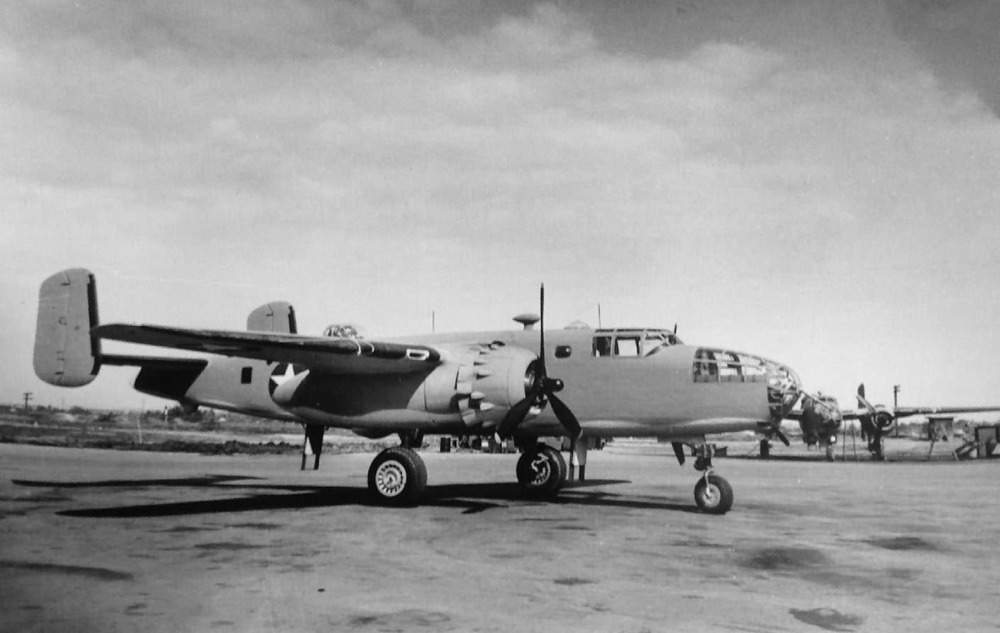History
In 1942, the Navy recognized that its flying boats, such as the PBY Catalina and PB2Y Coronado, offered excellent range but lacked the defensive armament, protection, and payload of dedicated bombers. Political opposition from the US Army initially blocked the transfer of land-based bombers to the Navy. The situation changed when the Army needed a suitable facility for the new Boeing B-29 Superfortress. The Navy owned a plant in Renton, Washington, that had been intended for the production of the twin-engine Boeing PBB-1 Sea Ranger. The Army proposed a deal: cancel the PBB-1, turn the Renton plant over for B-29 production, and in return, the Navy would receive navalized versions of Army bombers, including the B-25 Mitchell, the B-34/B-37 Ventura, and the B-24 Liberator. The Navy agreed.
As part of the deal, batches of B-25Cs and Ds were transferred to the Navy and redesignated PBJ-1C and PBJ-1D, respectively. The Navy acquired roughly 50 to 60 PBJ-1Cs in total, with the first examples reaching the Marine Corps in February 1943. Marine Bombing Squadron 413 (VMB-413) became the first PBJ unit, activating at Cherry Point, North Carolina, in March 1943. Initially a training squadron for navigators, radiomen, and gunners, its graduates later filled out other combat squadrons equipped with the PBJ.
The PBJ-1C was primarily intended for antisubmarine patrol. Early modifications replaced the ventral turret with a retractable AN/APS-3 sea-search radar. However, the extended radar caused drag and reduced speed, so the installation was later moved and faired into the nose, which offered better aerodynamics without sacrificing capability. As far as I know, this only happened to PBJ-1D and onward.
On September 15, 1943, three more Marine squadrons, VMB-423, -433, and -443, were activated, followed in October by VMB-611, -612, -613, and -614 as part of the first Marine Medium Bombardment Group. In December 1943, VMB-413 deployed overseas to Espiritu Santo in the New Hebrides (Vanuatu nowadays) for indoctrination training, before flying combat missions from Stirling Island in the Solomons in March 1944. Typical missions included long-range strikes against Japanese shipping attempting to evade the Allied blockade. At first, these were night raids on Rabaul, Kavieng, and Bougainville, but daylight missions soon followed. Marine PBJs were also tasked with antisubmarine patrols, giving the squadrons a varied operational profile.
The PBJ-1C could carry up to eight 5-inch HVAR rockets. Skip bombing and strafing were common attack methods. Some aircraft were fitted with provisions to carry a torpedo under the fuselage, though Marine PBJs never employed torpedoes in combat, as the command judged bombs to be more effective for antishipping strikes.
Field modifications further improved the aircraft. Some PBJ-1C/Ds replaced the ventral turret with a flexible .50 caliber tail gun, where the gunner had to lie prone and fire through a small opening with limited visibility. Others received waist guns for extra protection, compensating for the loss of the ineffective ventral turret.
Marine PBJ squadrons developed effective night intruder and low-level strike tactics. VMB-413 received a commendation from ComAirSols for pioneering these techniques. By mid-1944, more squadrons rotated into the Solomons and Bismarck areas, and by August 1945, they were operating as far west as the Philippines.
In total, nine PBJ squadrons deployed overseas before the war ended. Losses included 26 aircraft in combat and another 19 to operational accidents in theater. Despite this, the PBJ-1C and D proved reliable, versatile, and effective, with crews praising their lighter overall weight and radar capability. They remained in Marine service through VJ-Day, joined later by the PBJ-1H and J models.
The US Marine Corps was the sole operator of the PBJ Mitchell, ultimately acquiring 706 examples across the C, D, G, H, and J variants. The PBJ-1C, as the first navalized B-25, was a crucial asset in establishing the Marines’ medium bomber force and demonstrated the Mitchell’s adaptability in maritime and strike roles.







